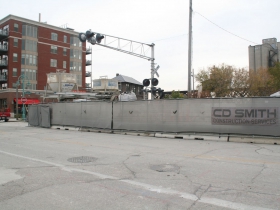

In his chapter on baths, Vitruvius describes a circular room with a dome in the following terms: “The Spartan sauna and sweating chambers should be joined onto the tepidarium, and however broad these are, they should have the same height up to the springing of the dome.” The rapport between cylinder and hemisphere is, however, different from that found in the Pantheon. This sort of geometry was characteristic of Roman architecture. The only source of light, the oculus, draws the visitor to the center of the space, where we can wonder at the monumental interplay of a hemispherical dome resting on a cylinder of the same height, a geometry confirmed by modern precision surveys (see Plate XII and Fig. In his introduction to the building in his famous treatise on architecture, Andrea Palladio highlights the main geometrical intention behind the design of the interior: “Some maintain it is the same round shape as the world: the height from the floor to the opening in the ceiling, from whence light enters, is the same as its width, that is, the diameter from one wall to the other.” The Rotunda is as impressive today as it was for Palladio, and it does indeed circumscribe a sphere.

Despite the intricacy of its constructive system, the unity of the composition is easy to grasp, as Georges Chedanne’s wonderful cutaway conveys (see Plate XI). Sphere and Cylinder: Models of Mathematical Harmony and Perfection Roman architecture can exhibit considerable complexity and sophistication, yet it typically does so by means of elaborating on an elemental geometrical conception. In questi dieci anni infatti si sono raccolti e analizzati i risultati di alcune importanti attività di scavo e ricerca svolte da diverse istituzioni e istituti di ricerca concretizzati in un impegnativo lavoro di sintesi visuale con gli strumenti della computer grafica 3D cercando di restituire una unità spaziale ad un'area che risulta oggi estremamente frammentata e di difficile lettura. Dopo dieci anni dalla prima pubblicazione si è deciso di operare un significativo aggiornamento dei contenuti della parte più monumentale della città, il palatino, il foro romano, i fori imperiali e la valle del colosseo, area un tempo in gran parte occupata dalla fastosa residenza dell'imperatore Nerone: La Domus Aurea. Il progetto nasce nel 1998 con il proposito di creare nuovi strumenti di comunicazione per la conoscenza della storia della costruzione della città di Roma e degli eventi ad essa collegati. Queste produzioni si inquadrano nell'ambito del progetto pluriennale A.R.T. La presentazione di Altair4 ad Arquelogica 2.0 consiste essenzialmente nella presentazione delle ultime produzioni su Roma Antica, attraverso la proiezione di alcune animazioni tratte da "How Nero Saved Rome" film in HD per National Geographic Channel e Il Foro Romano e i Fori Imperiali per la trasmissione RAI Ulisse. With all of those data has been collected and the vision to make it live, from its walls to the approaches for its survival, the palace is still shining in gold for the field of architecture and conservation. Those phases of conservation include comprehensive and multidisciplinary analysis, different kinds of surveying methods, and dynamic intervention decisions. In this article, it is aimed to be mentioned Domus Aurea, with Rome’s situation while it was building, difficulties that it faced, how it was an inspiration for the renaissance and the phases for its conservation in the last decades till today. Today, the Golden House is still unknown to most people even in its homeland. From the pages of history, its gorgeousness can be experienced but the reality never been gentle to the damned Emperor Nero’s home, Domus Aurea. Yet one of them had been separated from others in different ways. Even the word “palace” coming from the famous Palatine Hill which is in the heart of Rome for being the chosen location of the emperors. Roman imperial palaces are known for their glory for thousands of years.


 0 kommentar(er)
0 kommentar(er)
